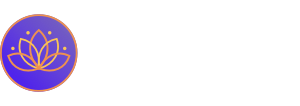It’s no wonder if you get confused by all the different names in a yoga studio schedule. Yoga may be a unified philosophy, but the types of physical yoga practice are numerous and new styles continue to emerge. Here is a brief overview of the most common ones:
Hatha yoga
The original style of physical practice in which asanas (poses) are held for several breaths. Although it typically begins with a few rounds of Sun Salutations, Hatha yoga tends to be less active than Vinyasa. If you’re new to physical practice, Hatha yoga is an ideal starting place in which you can go into more detail with each asana.
Iyengar yoga
A type of Hatha yoga in which a lot of emphasis is placed on the correct execution of asanas. Iyengar yoga is practized in specialised studios which facilitate the use of a large number of props, from ordinary ones (yoga blocks, belts and blankets) to special Iyengar aids (chairs, stools, ropes attached to walls and similar).
Vinyasa yoga
A more active and faster type of physical practice. It usually incorporates the same asanas as Hatha yoga, but the distinctive feature of Vinyasa yoga is that the poses are connected to each other by fluid movement. Sometimes you will find Vinyasa under the name “flow” yoga.

Ashtanga yoga
A fixed sequence of advanced posess, the order of which never changes. Ashtanga is a sub-style of Vinyasa yoga. There are six series of Ashtanga yoga, from the primary to the very advanced. You can practice Ashtanga in a guided class with a teacher (“led Ashtanga”) or you can do self-practice where the teacher merely helps you with adjustments in certain poses (“Mysore style”).
Power yoga
A modern style of physical practice that tries to adapt to the trend of fitness classes. Most of the time it is Vinyasa yoga. There is more emphasis on asanas that strengthen the parts of the body that we typically try to strengthen in the gym – glutes, thighs, abdominals and arms.

Hot yoga
Hot yoga can be any of the previous asana styles, but it is usually Vinyasa yoga. The only difference is that it is practiced in a room heated usually to 100-104°F.
Yin yoga
A passive style of physical practice in which individual asanas are held for a few minutes. Yin asanas are designed to stretch the stiff tissues in the body, especially the hip joints, hamstrings and surrounding ligaments, shoulder joints and spine. It helps students slowly and safely gain flexibility.

Restorative yoga
A style in which the main emphasis is on relaxation. Asanas are often held passively with the help of pillows, bolsters and blankets. You definitely won’t break a sweat in restorative yoga, so don’t forget your socks and sweater!
